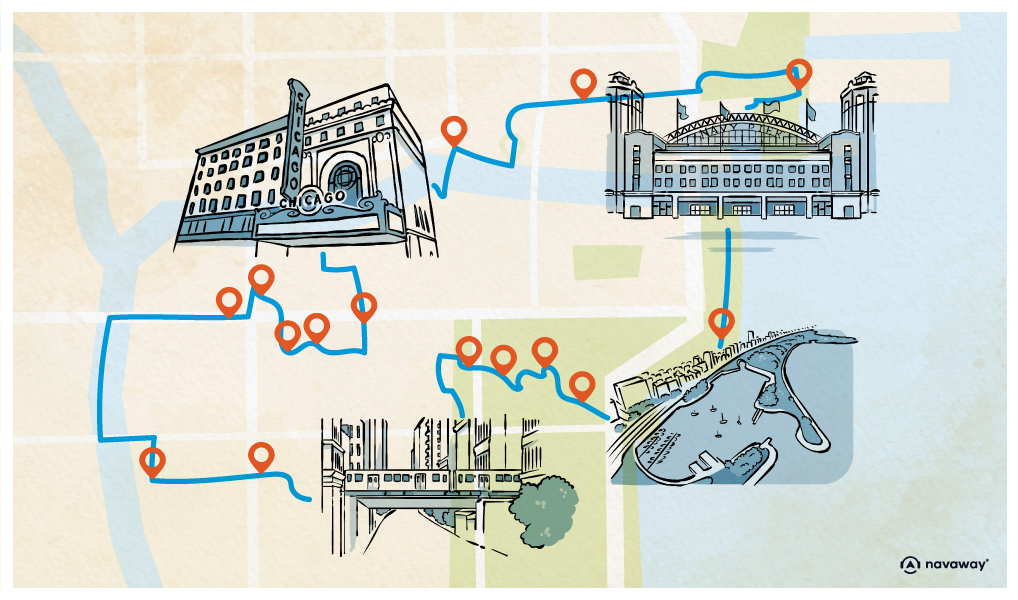
Chicago’s nicknames
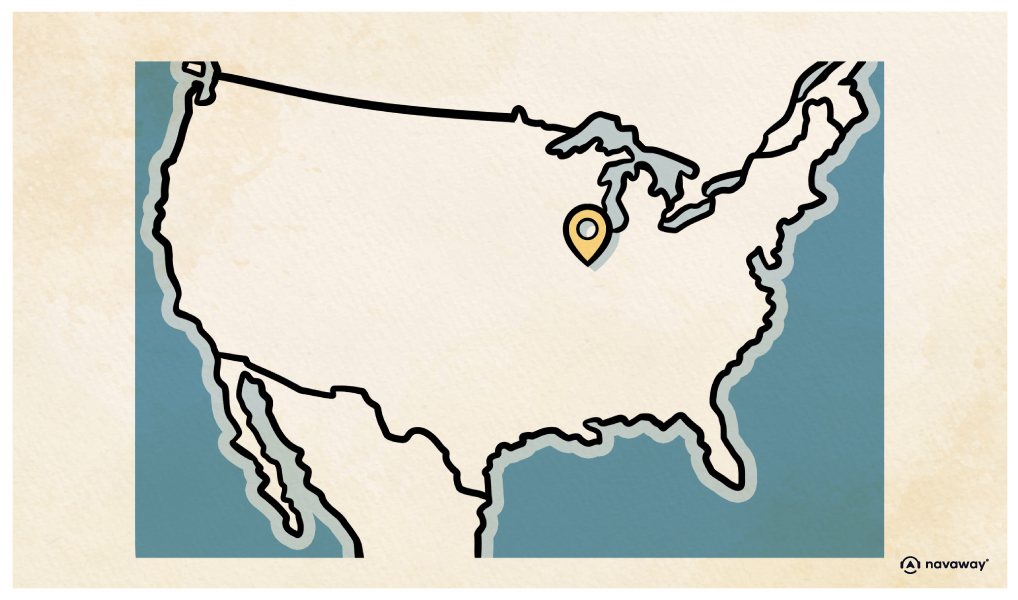
This point of interest is available as audio on the tour: Visit Chicago, Windy City a Michigan Beauty
Look up, and you’ll see a small bronze statue of a woman emerging from the waters of Lake Michigan, surrounded by flames, animals, and wheat.She represents the rebirth of the city after the Great Fire and how it subsequently became a pioneering city in several fields. But let’s talk a bit about the many nicknames that Chicago has acquired. You’ve surely heard of “the Windy City.” It’s true that its geographical position by the lake is conducive to gusts of wind, which can be icy in winter. But in reality, there’s not more wind in Chicago than elsewhere. If you ask the locals where the nickname comes from, they’ll respond to you that here, “windy” rather means “to blow hot air,” and actually refers to politicians who talk a lot but don’t accomplish much. Thus, Chicago has many other nicknames. For example, in the 1840s, it was called Porkopolis because of its large slaughterhouses. Indeed, by the end of the 19th century, Chicago produced 80% of the meat consumed in the United States! On another note, somewhat contradicting the story of blowing hot air, Chicago is also said to be a hardworking city. This idea arose from the time difference. Since business was mainly conducted with NYC, further east, Chicago businessmen logically had to wake up early to get hold of them. Chicago is also sometimes refered to as the City of Lincoln, who was long the representative of Illinois. It’s a resolutely Democratic political city. Obama was a professor at the University of Chicago, and Hillary Clinton grew up there. As you may know, it’s also been called the crime capital. During Prohibition, Chicago became the capital of organized crime around Frank Nitti, Bugs Moran, and Al Capone. As a reminder, prohibition in the United States, spanned from the 1920s to the 1930s, during which a constitutional amendment prohibited the manufacture, transportation, sale, importation, and exportation of alcoholic beverages. Naturally, banning something everyone seeks was like paving a highway for gangsters. Being close to Canada,the mafia organized, corrupting many policemen, judges, and politicians to smuggle goods from there. It was a time of violence, gang wars, speakeasies, and underground tunnel networks. But don’t worry, times have certainly changed! That being said, if you want to soakup the atmosphere of a gangster movie and walk in the footsteps of Al Capone, go spend an evening at the Green Mill, named in homage to the Moulin Rouge without associating the idea of a red-light district. It’s Al Capone’s bar, a vintage jazz club atmosphere with a trapdoors to escape in case of a police raid, you’ll feel like you’ve stepped back in time.


Discover Chicago with app
An interactive guide through the most beautiful streets, squares, and districts
25 fun audioguides full of historical facts, anecdotes, and legends
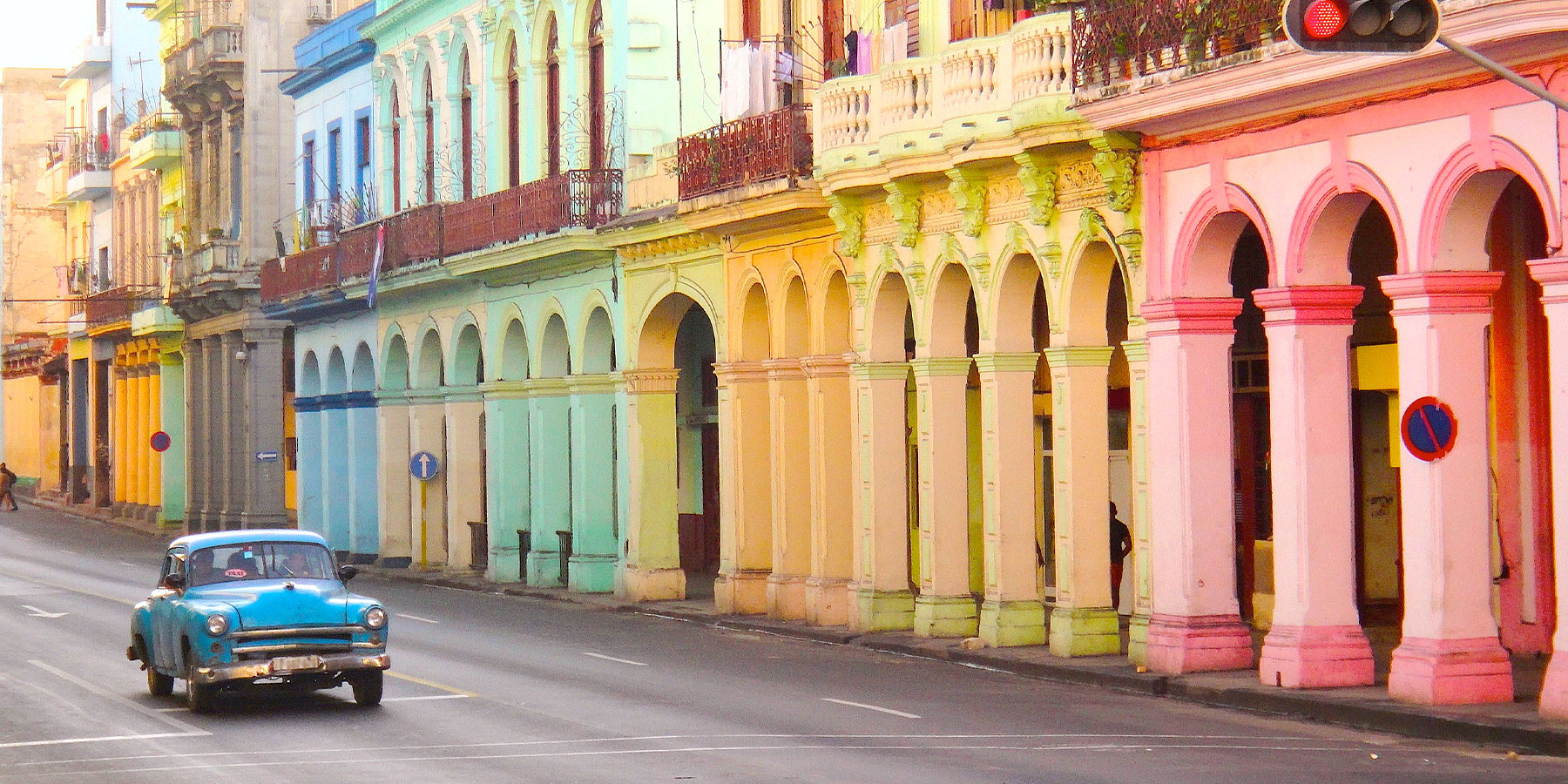
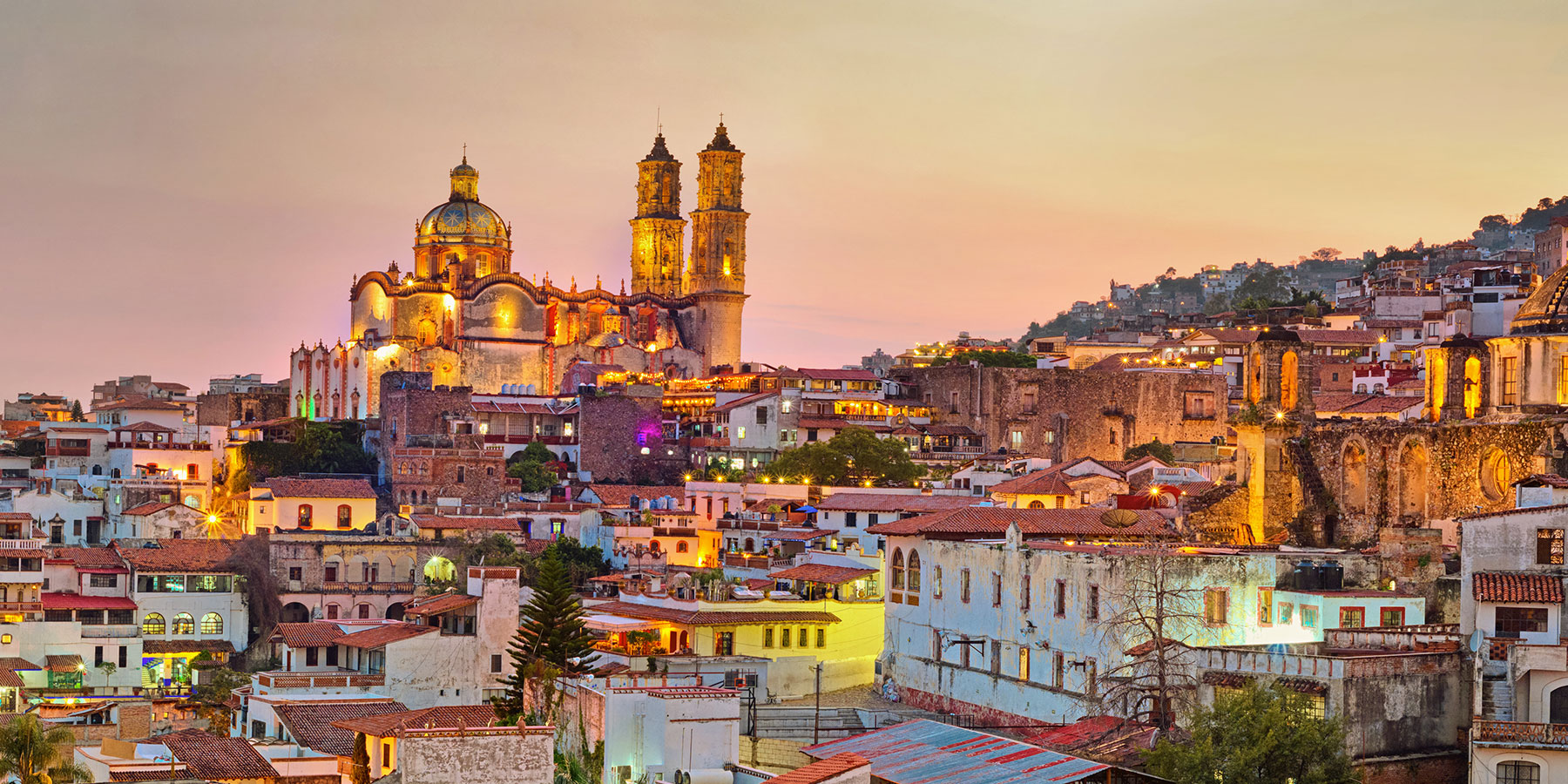
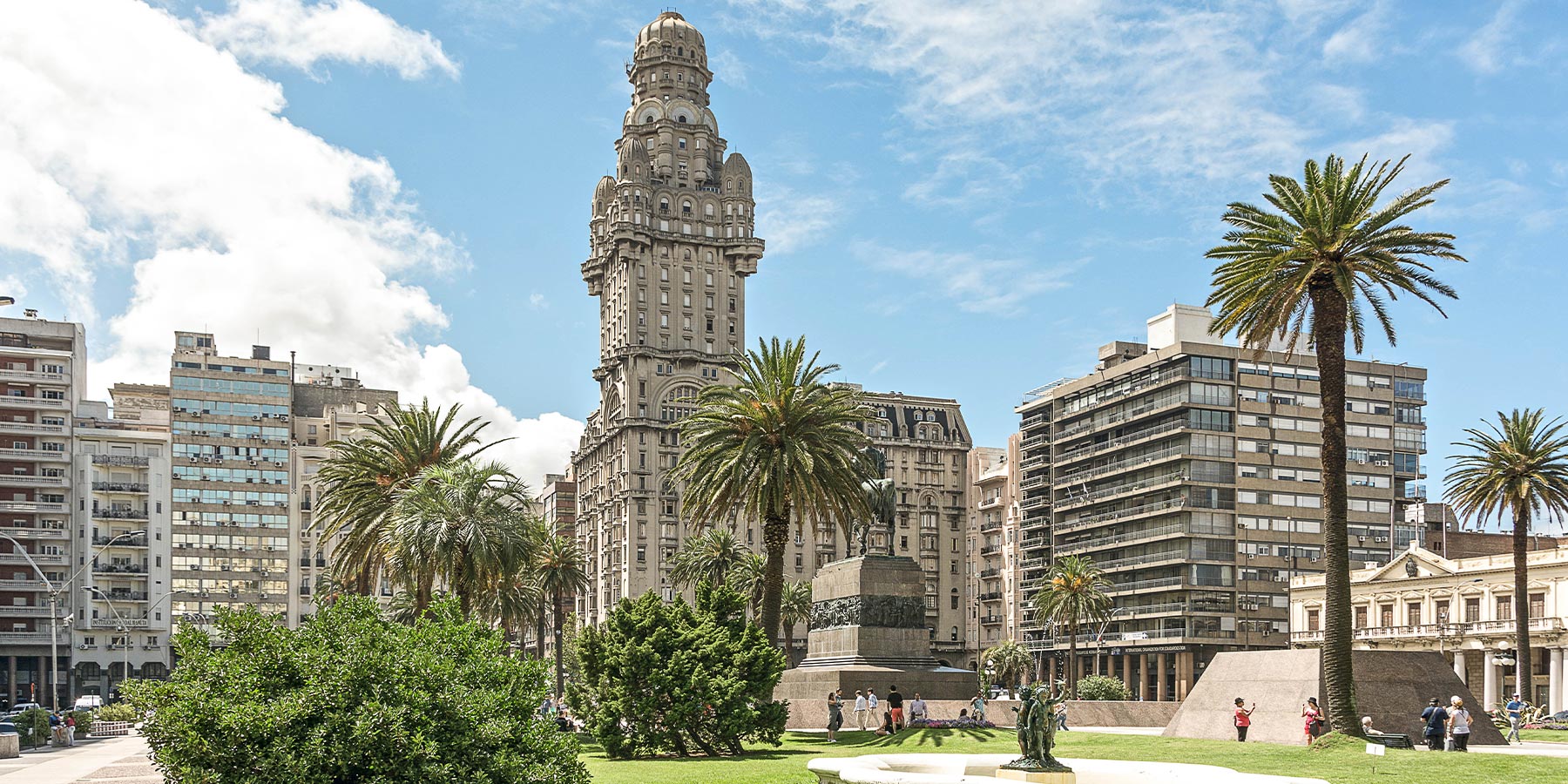


Comments